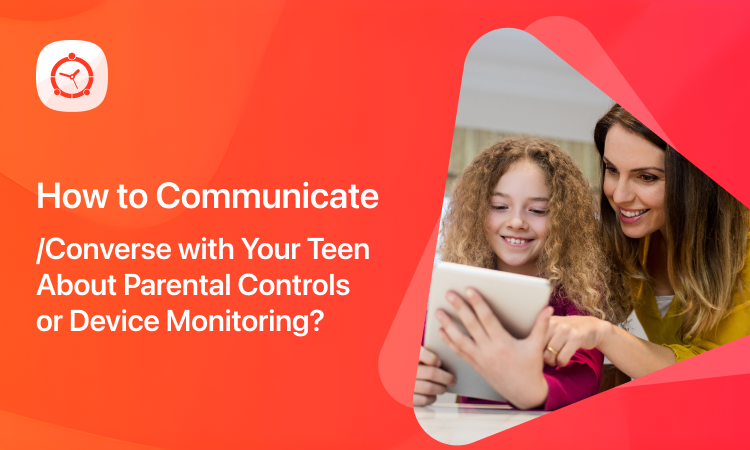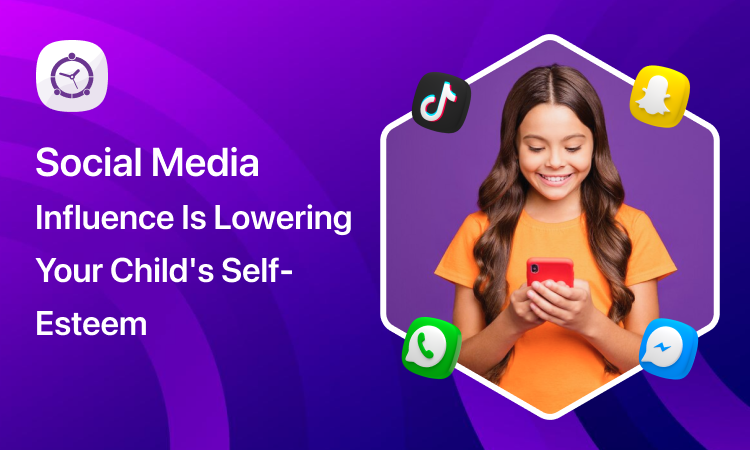As the New Year begins, it’s a time of fresh starts, resolutions, and setting goals for self-improvement. For parents of kids, this can be an excellent opportunity to focus on fostering essential life skills, including cyber etiquette. Teaching kids how to interact responsibly in the digital world is as vital as teaching them traditional manners. With kids spending increasing amounts of time online, a firm understanding of cyber etiquette ensures they navigate the digital landscape safely, respectfully, and effectively.
In this blog post, we’ll explore key techniques to instill cyber etiquette in kids and how digital tools, like the FamilyTime parental monitoring app, can complement these educational efforts.
What Is Cyber Etiquette and Why Does It Matter?
Cyber etiquette, often referred to as “netiquette,” encompasses the norms and behaviors appropriate for online communication. This includes respecting others’ privacy, avoiding cyberbullying, understanding the implications of digital footprints, and adhering to online safety guidelines.
For kids, practicing good cyber etiquette is more than just polite behavior—it’s about protecting their reputation, maintaining healthy relationships, and avoiding potential risks, such as scams, predators, and misinformation. Educating them about these concepts early can help build a strong foundation for responsible online habits.
Steps to Teach Kids Cyber Etiquette
Start with Open Conversations
The first step in teaching cyber etiquette is fostering open communication. Sit down with your kid and discuss their online habits, favorite platforms, and any concerns they may have about digital interactions. Share real-world examples of the consequences of poor online behavior, such as viral cyberbullying cases or instances of privacy breaches.
Using relatable examples can make the lessons more impactful and help kids understand the gravity of their actions online.
Set Clear Expectations
Establishing guidelines for online behavior is essential. Explain what constitutes respectful communication, such as avoiding offensive language, refraining from oversharing personal details, and asking permission before posting pictures of others.
Make these expectations a two-way street. Model the behavior you want your kids to adopt by practicing good cyber etiquette yourself.
Emphasize the Importance of Privacy
Kids often underestimate the risks of oversharing online. Teach them about privacy settings, avoiding sharing personal information with strangers, and recognizing phishing attempts. Highlight the permanence of digital footprints, stressing that once something is online, it can be difficult to remove entirely.
Introduce the Concept of Digital Empathy
Digital empathy—understanding and respecting others’ feelings online—is a critical component of cyber etiquette. Teach kids to pause and think before posting or commenting, considering how their words might impact someone else.
Discuss cyberbullying in detail and its emotional toll on victims. Encouraging empathy can make your kid a more conscientious digital citizen.
Monitor and Guide Without Hovering
Monitoring kids’ online activity without intruding on their privacy can be tricky. Striking this balance is crucial to ensure their safety while giving them room to learn and grow.
This is where tools like the FamilyTime parental monitoring app come into play. FamilyTime allows parents to keep an eye on their kids’ online activity while respecting their independence.
How FamilyTime Parental Monitoring App Enhances Cyber Etiquette Education
The FamilyTime parental monitoring app is a powerful ally in teaching kids cyber etiquette. Its range of features is designed to create a safe digital environment for kids, allowing parents to supervise without overstepping boundaries.
Encouraging Healthy Screen Time Habits
One of the critical components of cyber etiquette is knowing when to step away from screens. FamilyTime’s screen time management feature helps parents set daily limits on app usage, promoting a healthy balance between online and offline activities.
For example, you can allocate specific hours for schoolwork, leisure, and family time, teaching your kid to prioritize and manage their time effectively.
Filtering Inappropriate Content
Kids can inadvertently stumble upon inappropriate content while browsing the web. FamilyTime’s content filtering feature allows parents to block websites or apps that may expose kids to harmful or age-inappropriate material.
By creating a safer browsing environment, parents can focus on educating their kids about responsible online behavior without worrying about unwanted exposure.
Monitoring Social Interactions
Social media is often where cyber etiquette is most critical—and most often tested. FamilyTime enables parents to monitor social media activity, keeping an eye on potential red flags such as cyberbullying, inappropriate messaging, or excessive time spent on certain platforms.
This feature allows parents to intervene early if a problem arises while still giving kids the freedom to engage with their peers.
Integrating Cyber Etiquette Lessons into Daily Life
Make It a Family Affair
Incorporating cyber etiquette into your family’s New Year goals can create a supportive learning environment. Dedicate time each week to discuss online experiences, share tips, or even watch educational videos on digital citizenship together.
Using tools like FamilyTime, you can monitor progress and celebrate milestones, such as a week without arguments over screen time or successful application of privacy settings.
Gamify the Learning Process
Kids are more likely to engage in lessons that are fun and interactive. Turn cyber etiquette education into a game by rewarding positive behavior. For instance, you can use FamilyTime’s rewards feature to give extra screen time or other privileges when your kid demonstrates responsible online behavior.
Keep the Conversation Going
Cyber etiquette is not a one-time lesson; it’s an ongoing conversation. As new platforms and trends emerge, revisit the principles of netiquette with your kid. Encourage them to share their thoughts, ask questions, and discuss challenges they face online.
Why FamilyTime Is the Ultimate Tool for Digital Parenting
Parenting in the digital age is undoubtedly challenging, but the FamilyTime parental monitoring app makes it more manageable. By integrating this tool into your cyber etiquette education efforts, you gain:
Customizable Controls: Tailor settings to meet your family’s specific needs.
Comprehensive Monitoring: Track location, app usage, and online interactions with ease.
Real-Time Alerts: Receive notifications for concerning activity, such as attempts to access blocked content or suspicious contacts.
Peace of Mind: Ensure your kid’s online experiences are safe, respectful, and balanced.
FamilyTime is not just a monitoring tool—it’s a partner in your parenting journey. By offering features that support your efforts to teach cyber etiquette, it empowers you to raise responsible digital citizens.
A New Year, a New Approach to Cyber Etiquette
Teaching kids cyber etiquette as part of their New Year goals is a meaningful step toward fostering their digital maturity. With open communication, clear expectations, and the right tools like the FamilyTime parental monitoring app, you can equip your kid with the skills they need to thrive in the digital world.
As you set your family’s goals for the year, remember that cyber etiquette is not just about rules—it’s about creating a culture of respect, empathy, and safety online. And with FamilyTime by your side, achieving these goals becomes a collaborative and fulfilling experience for both parents and kids.
Start the New Year with confidence. Equip yourself with FamilyTime and make teaching cyber etiquette a goal worth celebrating.








